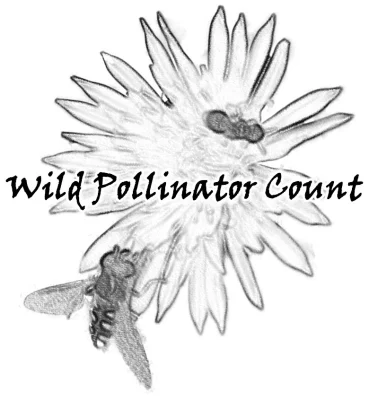It took us a little longer than usual to collate results this year, for understandable reasons! It’s been a challenging year, and we hope you’re all keeping safe and well.
The spring count happened 8-15 November 2020. We received just over 1000 submitted observations (1028 usable records, 18 were removed for incomplete data) representing over 12,000 insects! This is a drop from our all-time submissions record in autumn 2020 (in the midst of the first COVID lockdowns!), but still well above last spring’s count. Thank you to all who participated during what has been a difficult year for all of us.
The ubiquitous European honey bee was the most observed visitor, with native flies and bees coming in equal second. We received over 600 photos through our new submission form that allows photo submission with the data, rather than separate email – next year we hope this new form will become the default. Thank you to everyone who tried the new form and gave us permission to share their photos. Thanks also to those who engaged with out iNaturalist project. Check out the photo gallery here.
Spring 2020 results:
| Wild Pollinator Count category | Count | Percent of total |
| BEES – European honey bees | 4,706 | 39.2 |
| BEES – Blue-banded bees | 186 | 1.5 |
| BEES – Other bees | 1,476 | 12.3 |
| BEETLES – Ladybird beetles | 416 | 3.5 |
| BEETLES – Other beetles | 1,001 | 8.3 |
| BUTTERFLIES and MOTHS | 1,357 | 11.3 |
| FLIES – Hoverflies | 1,022 | 8.5 |
| FLIES – Other flies | 1,653 | 13.8 |
| WASPS – European wasps | 20 | 0.2 |
| WASPS – Other wasps | 174 | 1.4 |
| OTHER / unsure / uncategorised observations | 1,229 | 9.3 |
| Total insects counted in all our categories | 12,011 |
We’re so pleased to see results from every state and territory. Most submissions were from the southeast corner, but we were excited to see counts arrive from more remote locations, such as One Arm Point in northern Western Australia, Hiltaba and Roxby Downs in South Australia, and Wilcannia in western New South Wales (thank you!). Insects are everywhere! It’s great to find out more about what flowers they visit across the country.
More exotic plants (57%) were watched for insect visitors than native plants (43%). This is understandable, as flowering seasons of native plants may have been erratic this year, depending on whether a region was affected by drought or bushfire last year. As many people may not have been able to travel, we also might have had more counts submitted from urban backyards, which contain plenty of flowering exotics that insects love.
Thank you again for participating this year, 12 counts and counting! We really appreciate you taking 10 minutes to watch some flowers, we can’t do Wild Pollinator Count without you.
The next Wild Pollinator Count will happen 11-18 April 2021. See you then!


Awesome work! Keep it up
Interesting on the weekend I saw my first blue banded bee for years and only one honey bee in the garden!
https://www.inaturalist.org/projects/activating-for-citizen-science-sa/journal
LikeLike
Great to have the data and up-to-date photos.
LikeLike